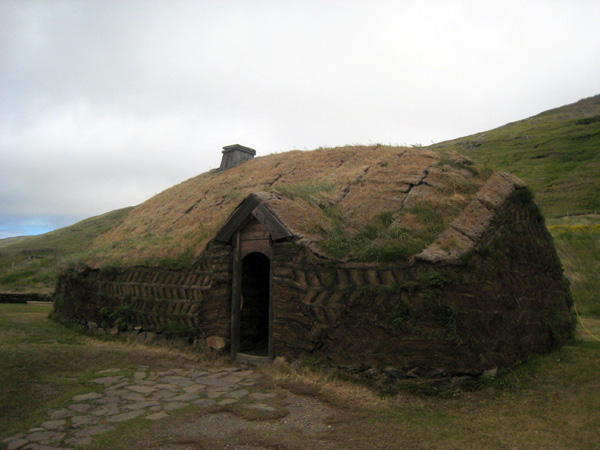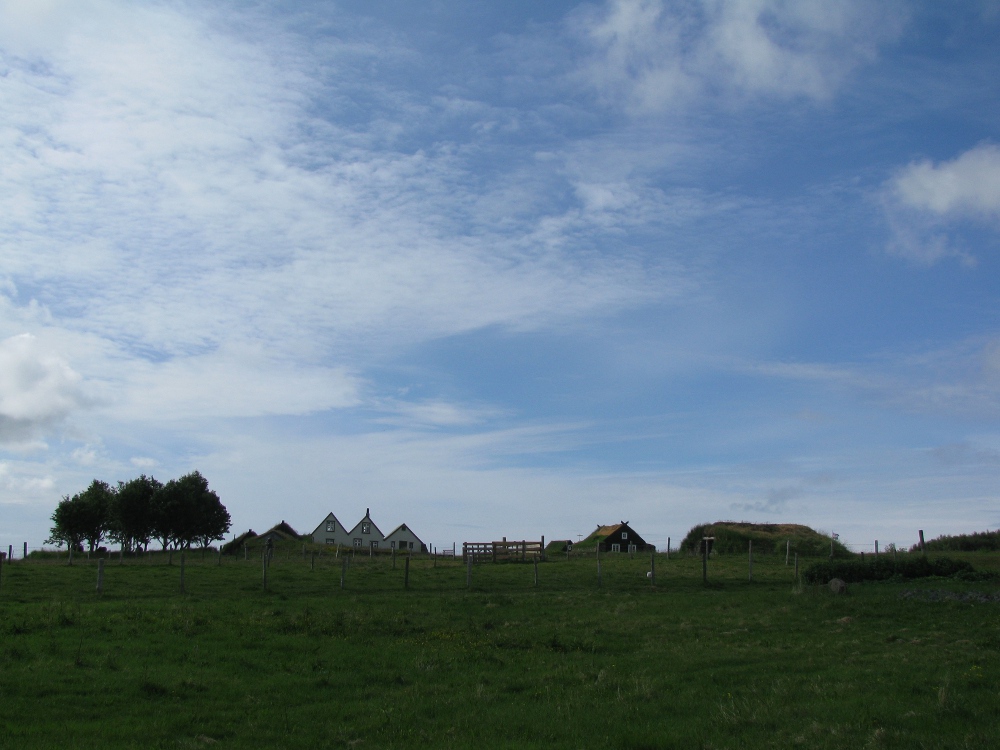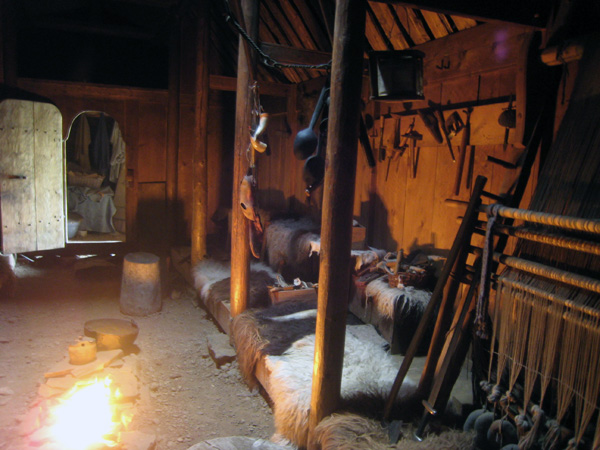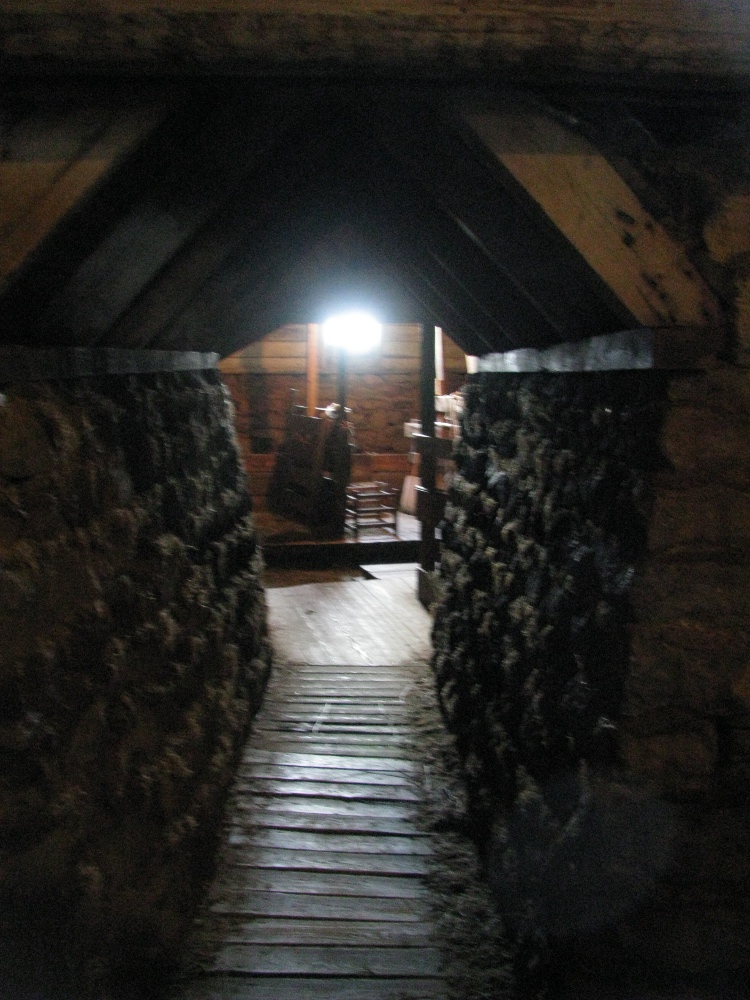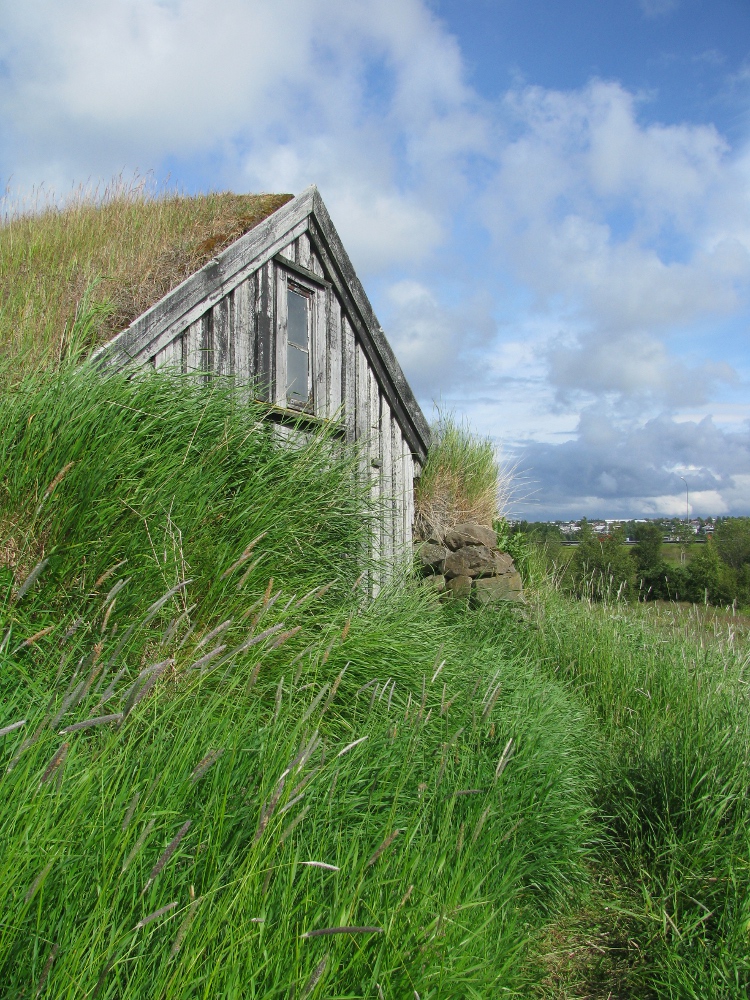The grass house that wouldn’t be blown in. Posted by hulda on Jun 30, 2013 in Icelandic culture, Icelandic history
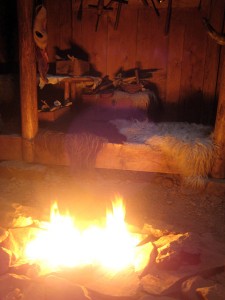 Imagine that you have just arrived to an island somewhere in the middle of an ocean and have decided upon a place you’ll build your new home. Far as the eye can see there’s almost nothing suitable to building with except for – turf.
Imagine that you have just arrived to an island somewhere in the middle of an ocean and have decided upon a place you’ll build your new home. Far as the eye can see there’s almost nothing suitable to building with except for – turf.
Torfbær, the turf house, dating back from the early times of settlement in the Medieval era to the 1950’s (and in some amount they’re still being built), has been the most typical home for an Icelander for over a thousand years. The shape has changed during the time and so has the size, the amount of people it’s supposed to house and so on, but one thing stays the same, namely the grassy walls rising all the way to the roof and often covering it as well. Sometimes the only thing that’s left visible is the front wall of the house.
Until recently it’s been believed that Iceland would originally have had large forests, but that they were all cut down as the island was settled. However, recent findings and weather mapping are suggesting otherwise: perhaps Iceland never had real trees at all, just a thick covering a dwarf birch that even at best could not be used for building anything large. The sagas seem to confirm this, making many detailed notes of people importing building wood from Europe and how they planned these projects.
Bringing timber over the Atlantic ocean in longboats was difficult and risky, so only the minimum necessary amount of it was brought over. It would then be used to build the frame of a house – first the base of the house would be laid down in stones, then a frame of wood which was then filled with a thick wall of turf slices. This made for an almost completely wind proof and well insulating wall that could also keep the rain outside, so that took care of the three worst weather related problems of Iceland – storms, coldness and wetness. No wonder then that even when new building materials began to arrive the turf houses still survived along them having one thing on their side that nothing else could ever trump: turf was very, very cheap.
To compare: a Medieval Icelandic longhouse…
…and a group of newer ones at the open air museum Árbæjarsafn in Reykjavík.
Naturally this gave turf houses reputation as poor people’s choice and indeed, that’s what it was. It’s important to remember though that up until the WW2 when first the British troops and after them the Americans occupied Iceland almost everyone living here was poor – and that many of the so-called “new” materials proved to be hazardous, expensive, and often not as good against those three weather problems as turf was. Wooden houses burned easily and in a tightly built area that’s as windy as Iceland is one burning wooden house quickly means that the whole town is on fire. Stone houses were wonderful but they took time and expertise to make, meaning that often the house owner would first have to import not only materials but also someone who knew how to build one. Corrugated iron was also a favourite, but that one – and the wooden houses – both shared some insulation problems. It just isn’t very warm in them! By this I mean that whenever someone died in a house, all that the family had to do was to leave one window open somewhere to avoid decay until the funeral day.
A viking era house was tall in build…
The later ones became really low. Sorry that the picture is so grainy and blurry, there was so little light in this house that this is the best that my camera could do… There’s a lamp at the end of the corridor, but in times of old it would of course have been a candle.
This is not to say that the turf house didn’t have its problems, severe ones at that. Taking the insulation for example, while it was good it also made sure that no air came in. The heating often meant smoke inside. The only thing that could be used to air out a little was a small hole through the thick wall that could not be left open for long at a time, and it’s speculated that many of the Icelanders’ health problems of the past may have been due to the bad air in which they had to live (besides malnutrition). Foreign travelers often found staying even a single night in one such turf house impossible and would rather opt for sleeping in the nearest church, much colder for lodging but at least the air inside was breathable.
Another, perhaps smaller problem was that the turf houses were also very dark. Windows could only be set into the wood frame which tended to mean only the front of the house, leaving the rest of the house dim. Candles were a necessity, especially considering one interesting feature of the Icelanders – they’ve always been highly literate. Everyone learned to read, most men and a few women also learned to write. Reading was a favourite pastime along with composing poetry, and we’re talking about farmers and their servant folk here!
As a rough time line of building materials would be that from turf the next step were wooden and stone buildings followed by corrugated iron. Then came concrete, which had all the pluses and none of the minuses of turf* and Iceland became quickly one of the leading nations of Europe in functionalist architecture. You’ll see examples of all three newer materials downtown in the city centre, but alas there are no turf houses any longer with the exception of the Medieval one that you can go see at The Settlement Exhibition. The turf and wood parts of that one are, alas, long gone though. For the turf houses that are still intact you’ll have to travel at least to the suburbs, or possibly even to the countryside, all depending on which era house you want to see. The Medieval one you’ve seen in this entry is in Eiríksstaður, if my memory serves me right.
Let’s go take a better look at the Árbæjarsafn! There’s some commentary in the subtitles (nothing very serious though). 🙂
*Aside of cracking in an earth quake – turf does not do that.**
**Unless it’s a pretty bad earth quake of course.
On another note, the winner of the Icelandic blog’s competition is “Icy”, congratulations! I will soon e-mail you for your contact info. 🙂

Build vocabulary, practice pronunciation, and more with Transparent Language Online. Available anytime, anywhere, on any device.
About the Author: hulda
Hi, I'm Hulda, originally Finnish but now living in the suburbs of Reykjavík. I'm here to help you in any way I can if you're considering learning Icelandic. Nice to meet you!



